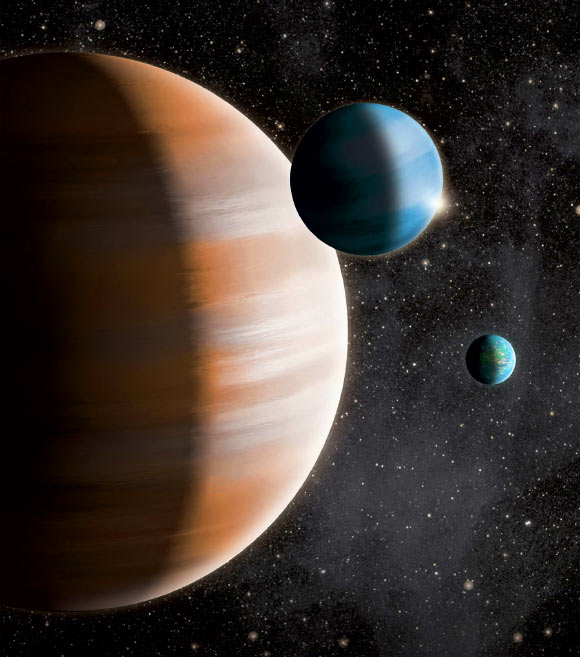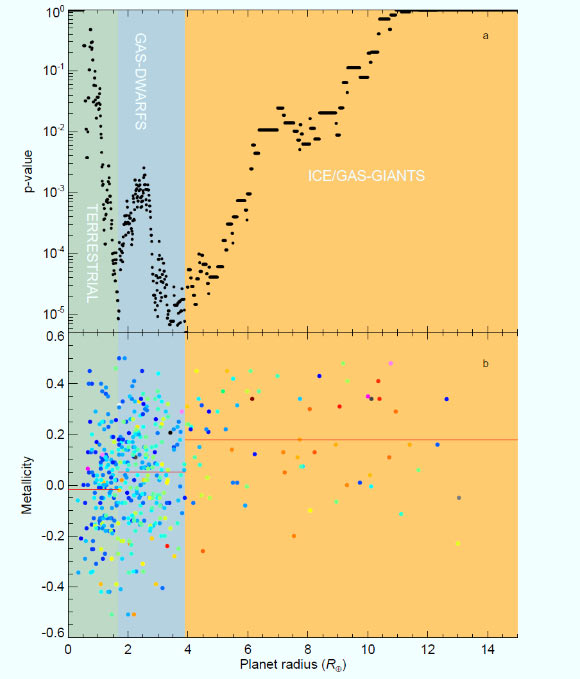Extrasolar planets can be divided into three types: terrestrials, gas giants, and mid-sized gas dwarfs – planets between about one and four times the size of Earth, shows a new study led by Dr Lars Buchhave from the Harvard-Smithsonian Center for Astrophysics.

This artist’s conception shows a terrestrial exoplanet, a gas giant and a mid-sized gas dwarf. Image credit: J. Jauch.
Our Solar system hosts small, rocky terrestrials like Earth and Mars and large gas giants like Neptune and Jupiter. But it’s missing planets between about one and four times the size of Earth. NASA’s Kepler mission has recently discovered that this type is very common around other stars.
Kepler finds exoplanets using the transit method, looking for a star that dims as a planet passes in front of it from our point of view.
Astronomers can learn the planet’s size from how much starlight it blocks. However, to determine the planet’s composition they need to measure its mass, so its density can be calculated.
A rocky planet will be much denser than a gas giant. Unfortunately, the smaller a planet, the harder it is to measure its mass, especially for the dim and distant stars examined by Kepler.
Dr Buchhave’s team took a different approach.
The scientists measured the amount of elements heavier than hydrogen and helium, which astronomers collectively call metals, in stars with exoplanet candidates. Since a star and its planets form from the same disk of material, the metallicity of a star reflects the composition of the protoplanetary disk.

Host star metallicities and three types of exoplanets with different composition. Image credit: Lars A. Buchhave et al.
The team took follow-up spectra of more than 400 stars hosting over 600 exoplanets. Then, the astronomers conducted a statistical test to see if the sizes of the planets fell into natural groups, along with the stellar metallicities.
They found two clear dividing lines – one at a size 1.7 times as large as Earth and the other at a size 3.9 times larger than Earth.
They infer that these boundaries also mark changes in composition. Planets smaller than 1.7 Earths are likely to be completely rocky, while those larger than 3.9 Earths are probably gas giants.
Planets between 1.7 and 3.9 times the size of Earth were dubbed gas dwarfs since they have thick atmospheres of hydrogen and helium.
The rocky cores of gas dwarfs formed early enough to accrete some gas, although they did not grow as large as gas giants like Jupiter.
The findings are published in the journal Nature (arXiv.org version).
______
Lars A. Buchhave et al. 2014. Three regimes of extrasolar planet radius inferred from host star metallicities. Nature 509, 593–595; doi: 10.1038/nature13254







